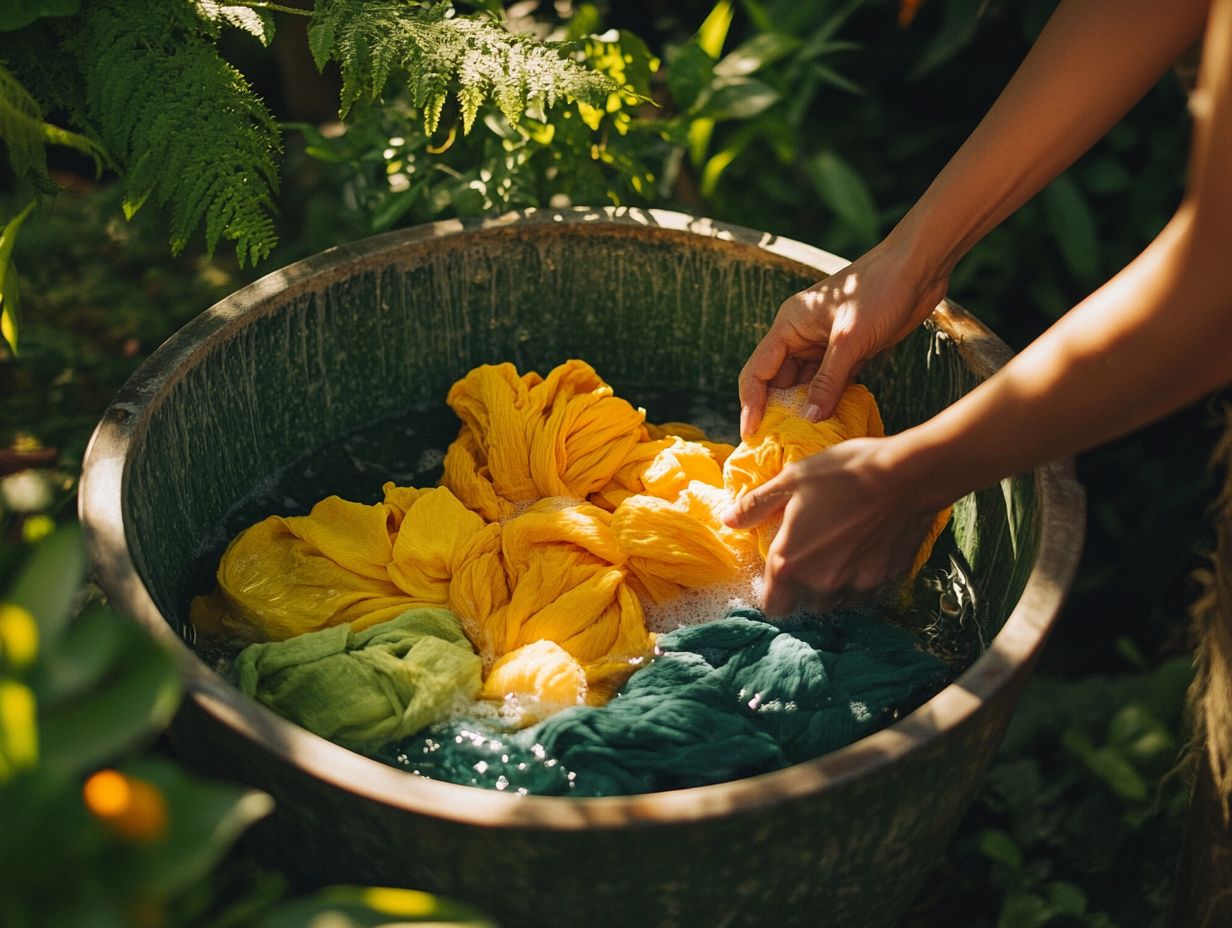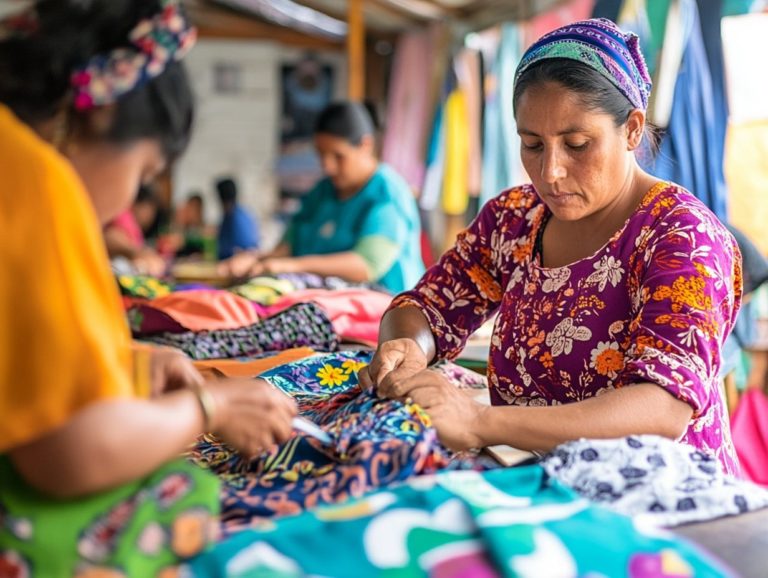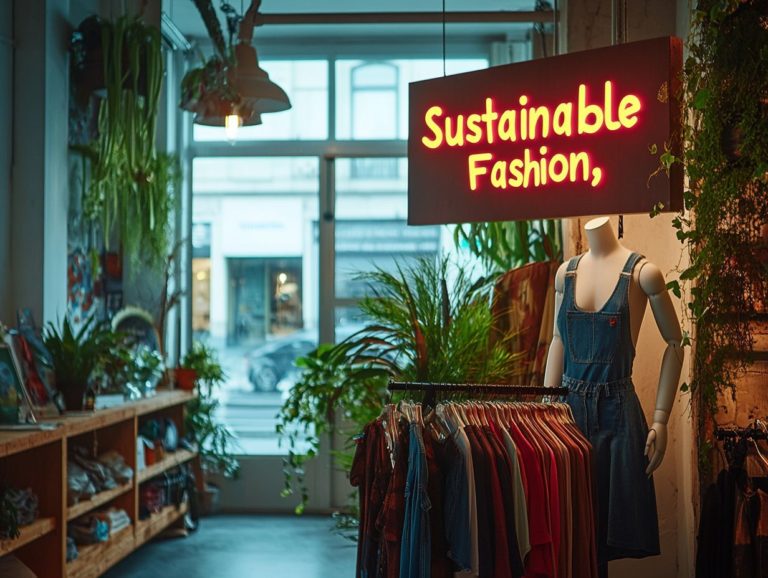How to Care for Your Sustainable Clothes
In today s world, the shift towards sustainable clothing is more crucial than ever for you. With the rise of fast fashion, it s vital that you understand the environmental and social impacts of your wardrobe choices.
This guide will walk you through how to care for your sustainable clothes, offering insights on proper washing and drying techniques, as well as effective storing methods. You ll uncover common mistakes to avoid, explore eco-friendly alternatives for clothing care, and receive tips on building a sustainable wardrobe filled with quality, ethical brands.
Ready to dive in? Small changes can lead to a huge impact!
Contents
Key Takeaways:
- Sustainable clothing has a positive impact on the environment and society.
- Proper care for sustainable clothing includes washing and storing techniques to extend their lifespan.
- Avoiding common mistakes and using eco-friendly alternatives can help maintain sustainable clothing.
The Importance of Sustainable Clothing
Sustainable clothing transcends mere trendiness; it represents a compelling movement toward eco-friendly practices that benefit both our environment and society. As you celebrate Earth Day and advocate for a sustainable wardrobe, it s essential to grasp the significance of your ethical fashion choices.
Influential figures like Amy Powney and Livia Firth emphasize that making informed decisions when selecting stylish, sustainable brands can significantly contribute to a circular economy and minimize waste. By embracing sustainable fashion, you position yourself as an active participant in the solution, reshaping consumer behavior for a more responsible future.
Environmental and Social Impact
The environmental and social impact of sustainable clothing is significant. By selecting garments made from eco-friendly materials and supporting ethical production practices, you actively contribute to reducing carbon footprints.
This intentional choice conserves resources and champions social equity, ensuring fair wages and safe working conditions for everyone in the fashion supply chain. Embracing the principles of a circular economy where clothing is reused, repaired, or recycled minimizes waste.
Opting for vintage pieces enhances your sustainable approach, allowing you to make unique fashion statements while decreasing the demand for new production. Ultimately, this leads to a lighter environmental footprint.
Caring for Sustainable Clothing
Caring for sustainable clothing extends its lifespan and emphasizes the importance of quality over quantity. This approach enables you to make thoughtful choices that resonate with the ideals of sustainable fashion.
By embracing effective clothing care practices, you can appreciate your investment pieces and ensure they remain stylish and functional for countless wears.
Proper Washing and Drying Techniques

Proper washing and drying techniques are crucial for maintaining the integrity of sustainable clothing while minimizing your environmental impact.
Select the right temperature settings and use eco-friendly detergents to significantly lower your carbon footprint. Washing in cold water saves energy and preserves the vibrant colors and quality of your garments.
Opting for biodegradable detergents is a smart move, preventing harmful chemicals from seeping into waterways and providing a gentler approach for both the planet and your fabrics.
Embracing these sustainable practices ensures that your clothing lasts longer, promoting a more eco-conscious lifestyle while highlighting the importance of fabric care in today s world.
Start your sustainable journey today by following these tips!
Introduction
Learn how to store, maintain, and shop for sustainable clothing to enhance your wardrobe’s longevity and environmental responsibility.
Storing and Maintaining Clothing
Storing and maintaining your clothing effectively can significantly enhance the longevity of sustainable garments, especially vintage pieces that embody timeless fashion.
To ensure these treasured items remain in excellent condition, using good storage methods is essential. Consider using breathable garment bags and avoiding direct sunlight, which can lead to fading.
Regularly inspect your clothing for any signs of wear or damage. Catching potential issues early allows for timely repairs that support sustainability.
Choosing eco-friendly detergents helps maintain fabric integrity and contributes to a healthier environment. Start using these easy tips today to keep your clothes looking great and extend the life of your sustainable fashion choices.
Common Mistakes to Avoid
When you embark on the journey toward a more sustainable wardrobe, it s essential to be aware of the common pitfalls that could undermine your efforts. These pitfalls can lessen the value of your sustainable clothing investments.
By steering clear of impulse purchases and prioritizing quality over quantity, you cultivate a responsible shopping mindset that truly supports your commitment to sustainability.
How to Extend the Lifespan of Sustainable Clothes
Extending the lifespan of your sustainable clothes is achievable through thoughtful clothing care and regular repairs. This ensures that your wardrobe remains both eco-friendly and functional.
By adopting straightforward techniques, like patching up holes, replacing buttons, and reinforcing seams, you can easily mend your garments instead of tossing them aside.
Incorporating methods like handwashing or using eco-friendly detergents helps preserve the fabric’s integrity, significantly reducing wear and tear. Additionally, make it a habit to check for minor damage before it spirals out of control. These practices are part of how to make sustainable fashion choices daily.
Timely repairs are often simpler and more effective. Embracing mindful practices like proper storage and maintaining the right washing temperature contributes to a sustainability-driven approach. To further enhance your efforts, learn how to identify sustainable clothing labels, allowing your cherished pieces to endure through the seasons.
Eco-Friendly Alternatives for Clothing Care

Embracing eco-friendly alternatives for clothing care enables you to cultivate a profound connection to sustainability. This allows you to make conscious choices that benefit both your garments and the environment.
By opting for natural cleaning products and sustainable materials like Modal and Lyocell types of fabric made from trees, you can significantly reduce your ecological footprint while enhancing the longevity of your wardrobe. To learn more about this, check out the lifecycle of sustainable clothing.
Natural Cleaning Products and Methods
Natural cleaning products present a safe and eco-friendly alternative for maintaining your sustainable clothing. They seamlessly blend performance with environmental consciousness.
With options like vinegar, baking soda, and essential oils available, you ll find effective solutions for tackling stains and odors while being kind to the planet. Vinegar serves as a natural fabric softener, brightening colors and enhancing the vibrancy of your garments.
Baking soda neutralizes strong smells, ensuring your clothes smell fresh. Essential oils introduce a delightful fragrance into your laundry routine and add antibacterial properties, making them excellent allies in your clothing care.
By incorporating these natural cleaners into your routines, you can not only extend the life of your garments but also improve your overall well-being. Choosing these sustainable options means you are actively contributing to a healthier environment while keeping your wardrobe looking and feeling its best. For more insights, check out how to maintain your essential clothing items.
Tips for Shopping and Building a Sustainable Wardrobe
Building a sustainable wardrobe demands a level of intentionality and mindfulness in your shopping habits. This enables you, as a discerning shopper, to make ethical choices that genuinely reflect your values.
By concentrating on stylish sustainable brands and ethical practices, you can curate a wardrobe that not only looks fabulous but also champions environmental responsibility.
Choosing Quality and Ethical Brands
Choosing quality and ethical brands is a vital step in building a sustainable wardrobe. This blends style with responsibility.
By opting for these brands, you gain the confidence that your clothing is made with respect for the environment and the workers involved.
These ethical choices often involve organic materials and eco-friendly manufacturing processes. They lead to a lower carbon footprint.
Invest in high-quality pieces from responsible brands! They ll last longer and reduce the need for constant replacements.
Frequently Asked Questions

How can I wash my sustainable clothes?
Follow the care label instructions. Use cold water and eco-friendly detergent, and air dry to save energy.
Can I iron them?
Yes, use the lowest heat setting and iron inside out. A steamer is a gentler option.
How often should I wash them?
Wear sustainable fabrics like organic cotton several times before washing. This saves water and energy.
What if they get stained?
Try spot cleaning with mild detergent first. If needed, wash following care instructions, avoiding harsh chemicals.
Can I dry clean them?
Avoid dry cleaning, as it uses harmful chemicals. If needed, choose an eco-friendly cleaner.
How should I store them?
Make sure they are clean and dry. Use breathable storage options like cotton bags and keep them cool and dry.






